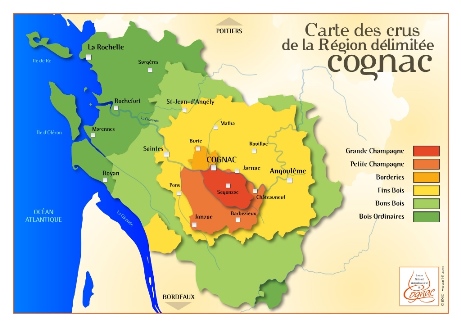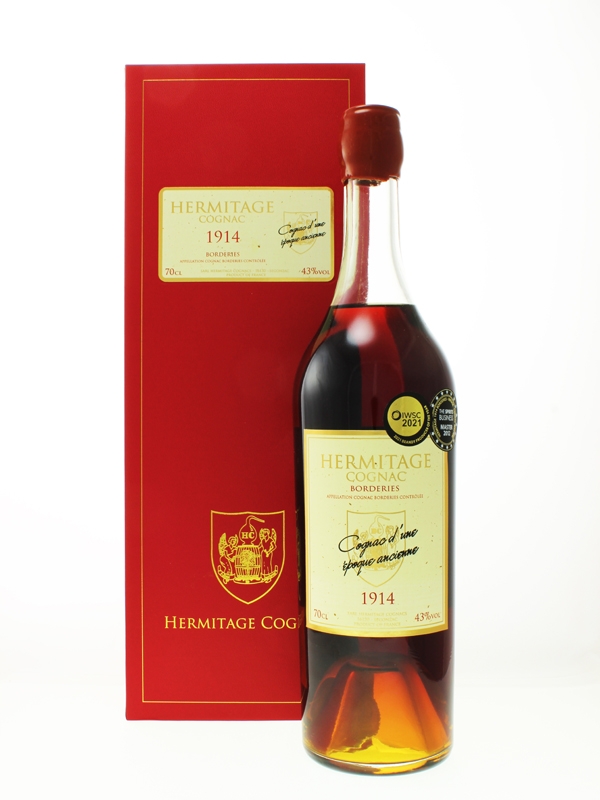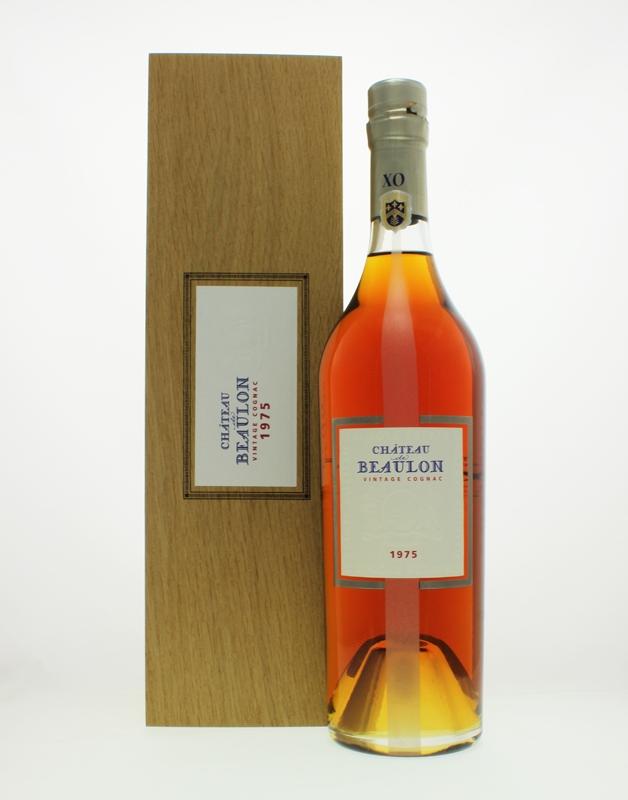David on Technical Topics – ‘Terroir’, The Land
The French use the term ‘terroir’ uniquely to describe geological and climatic conditions as a basis for their system of ‘Appellations Cognac Controlee’. This is the geographic, quality control that defines the cognac crus and is vital for the Cognaçaise to differentiate their products. All the brandies entitled to the ‘cognac appellation’ are made from the same grape varieties, harvested in the same way, at the same time of the year, fermented in similar vats, distilled in the same type of still and aged in regulation oak barrels.
There are six crus of cognac and in the centre is the Premier cru de Cognac, Grande Champagne, from which most of the finest cognacs come. Most Hermitage Cognacs originate from here. Cognacs crus form concentric circles with Grande Champagne as a rough semi-circle in the heart. As you move further away from the centre, the cognac quality steadily decreases. Over time, cognac producers have gradually moved closer to the centre of the region.
In the west of the cognac region lie the islands of Ré and Oléron and the port of La Rochelle. Towards the east is the region of Limousin famous for its oak forests, the wood of which is used for the production of barrels used to age cognac. The landscape of the region is generally that of rolling hills, resembling the Sussex Downs, only with vines rather than pastures. This comparison is no accident since ‘cognac is a brandy of chalky soil’.
The heart of the Grande Champagne is composed of a special sort of chalk, the Campanian, a name which echoes the Latin origin of the word ‘Champagnes’. This pure chalk is found mainly on the higher elevations of the cru and is one of three layers of variously chalky soil which comes to the surface in the area. The other two layers are also rather special. Santonian chalk is named after the collective area of ‘Saintonge’ which covered much of Petite Champagne and Cognaçian chalk which surrounds the town of Cognac. The soil in Grande Champagne, like all other chalky soils was formed by the accumulation of small fossils including one found nowhere else called Ostrea Vesiculari. Fault lines made up of silica and marcasite also exist but it is the chalkiness in the soil which is crucial due to its physical properties, crumbliness and friability. The Santonian chalk is more solid and slightly less chalky but still quite crumbly and extends over some of the smaller slopes of Grande Champagne and Petite Champagne.
The Borderies cru, to the north of Grande Champagne, has special clay in the soil known as groies which dates geologically from the Jurassic era, some ten million years ago. It is a mixture of chalk, which is gradually breaking down and clay and produces a unique cognac with nutty and toffee qualities. Sometimes underrated this cognac is very different from the other crus. The surrounding crus of Fins Bois and Bon Bois are quite difficult to define, being a mixture of arable soil, compacted chalk and clay. They usually produce some unremarkable cognacs but there are a couple of exceptional areas. One is to the North East of Jarnac and the other is close to the Gironde estuary. Both have quite dense chalk and can produce some excellent cognacs. The sixth cru, Bois Ordinaire, makes little, if any cognac these days but it does supply eaux de vie for other purposes.
The climatic conditions over the area are usually regarded as temperate. Although snow is seen from time to time, very cold conditions are unusual and the extreme heat often experienced on the Mediterranean coast is rare. So it is in these rather special conditions, where vine roots can spread through the soil sometimes to a depth of more than twenty five metres, that the Cognaçaise can claim uniqueness, unmatched by any other part of the world. They are the perfect conditions for ‘Appellation Cognac Contrôlée’.
To read more Technical Topics go to our Brandy Education page.



